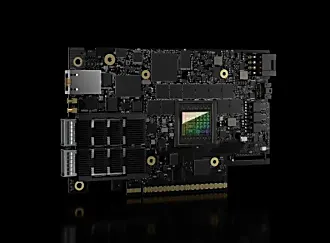Andres Rodriguez
on 9 July 2019
MAAS 2.6 – ESXi storage, multiple gateways, HTTP boot and more
Canonical is happy to announce the availability of MAAS 2.6. This new release introduces a range of very exciting features and several improvements that enhances MAAS across various areas. Let’s talk about a few notable ones:
Growing support for ESXi Datastores
MAAS has expanded its support of ESXi by allowing administrators to create & configure VMFS datastores on physically connected disks.
MAAS 2.5 introduced the ability to deploy VMWare’s ESXi. This, however, was limited in its ability to configure storage devices by just being able to select the disk in which to deploy the operating system on. As of 2.6, MAAS now also provides the ability to configure datastores. This allows administrators to create one or more datastores, using one or more physical disks. More information is available in https://docs.maas.io/2.6/en/installconfig-vmfs-datastores .
More information on how to create MAAS ESX images is available in https://docs.maas.io/2.6/en/installconfig-images-vmware .
Multiple default gateways
MAAS 2.6 introduces a network configuration change (for Ubuntu), where it will leverage the use of source routing to support multiple default gateways.
As of MAAS 2.5, all deployed machines were configured with a single default gateway. By doing so, if a machine were to be configured in multiple subnets (that had gateways defined), all outgoing traffic would go out the default gateway even though the traffic was intended to go out through the subnets configured gateway.
To address this, MAAS 2.6 has changed the way it configures the network when a machine has multiple interfaces in different subnets, to ensure that all traffic that is meant to go through the subnet’s gateway actually does.
Please note that this is currently limited to Ubuntu provided that this depends on source routing using netplan, and this is only currently supported by cloud-init in Ubuntu.
Leveraging HTTP boot for most of the PXE process
MAAS 2.6 is now leveraging the use of HTTP (as much as possible) to boot machines over the PXE process rather than solely rely on TFTP. The reasons for the change are not only to support newer standards/features, but also to improve PXE boot performance. As such, you should now expect that:
- UEFI systems that implement the 2.5 spec can now fully boot over HTTP.
- KVM’s will rely on iPXE to perform HTTP boot
- Other architectures that support HTTP boot, such as arm64, will prefer it over tftp.
Prometheus metrics
MAAS now exposes Prometheus data that can be used to either track statistics or performance. For more information into what metrics are exposed, please refer to https://discourse.maas.io/t/maas-2-6-0-released/724 and to learn how to enable them, refer to https://docs.maas.io/2.6/en/manage-prometheus-metrics .
Other features and improvements
A more extensive list of features and improvements introduced in MAAS 2.6 includes:
- Performance – Leverage HTTP for most of the PXE process
- Performance – Track stats and metrics with Prometheus
- User experience – Provides a more granular boot output
- Networking – Multiple default gateways
- Power control – Added support for redfish
- Power control – Added support for OpenBMC
- ESXi – Support configuring datastores
- ESXi – Support registering to vCenter
- User experience – Dismiss/supress failed tests
- User experience – Clear discovered devices
- User experience – Added note to machine
- User experience – Added grouping to machine listing page
Please refer to https://discourse.maas.io/t/maas-2-6-0-released/724/2 for more information.



